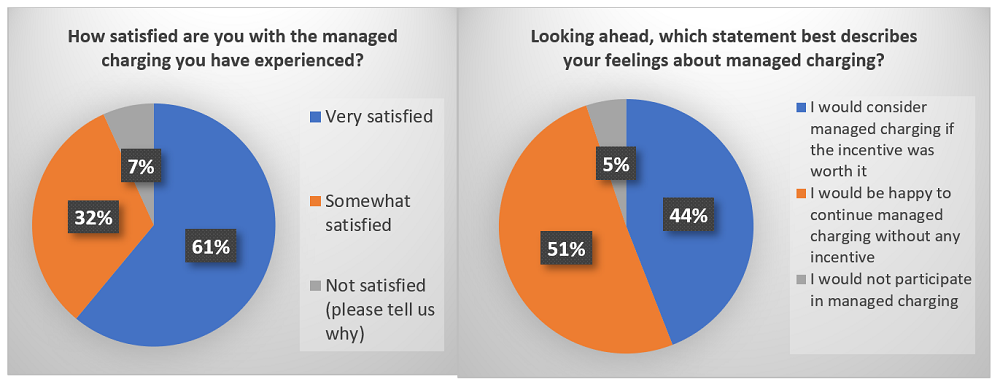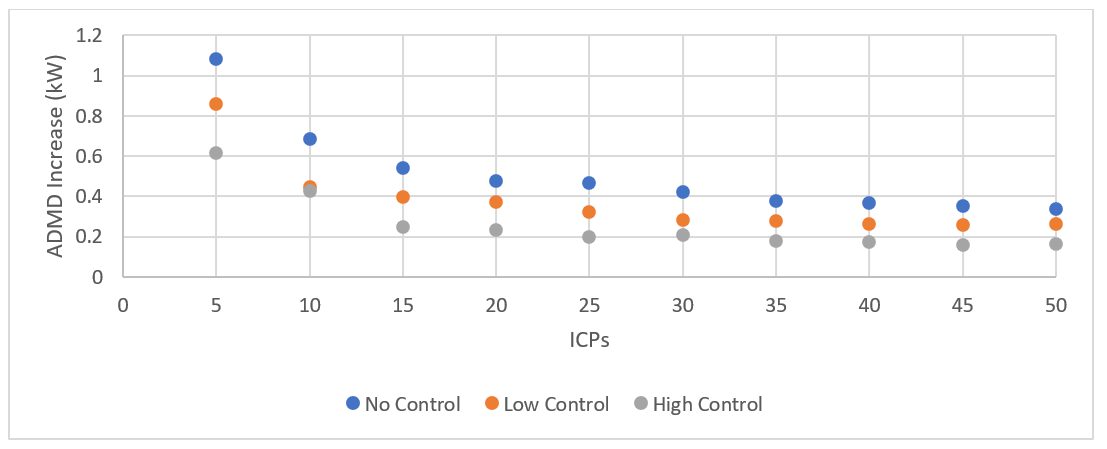Smart EV charging trial
Talking regularly with our customers will be vital to ensuring our network successfully supports the projected increase in electric vehicles (EV) in the future.
That is a key finding from a three-year Powerco trial that sought to understand Kiwis’ behaviour and preferences around EV charging, so that we can prepare our electricity network for increased demand, particularly at times of peak load.
“Electric vehicle uptake, including hybrids, on Powerco’s footprint increased by 59.5% from 2021 to 2022. As Aotearoa decarbonises this is only going to grow, and the impact of EV charging on peak demand could have significant implications for the available network capacity,” says Energy Futures Manager Daniel Gnoth.
“Therefore, Smart (managed) charging is necessary to facilitate the adoption of EVs while ensuring optimal network capacity upgrades.
“This trial was very useful and has given us some key insights, particularly that customer tolerance is a dynamic measure, and it’s important for us to engage with customers regularly in order to ensure the best possible network service.”
The Smart EV Charging Project was launched in late 2020 with the recruitment of 80 EV drivers from across our electricity network. We installed Evnex EV Smart charging units into customers' homes and used these chargers to collect information about participants’ charging habits and how that impacted our electricity network.
The trial lasted from 2021-23, during which time Powerco acted like a distribution system operator (DSO) where the network had visibility of changing events and the ability to manage the rate of charging under certain conditions.
Initially, participants’ charging was unmanaged, and their charging habits were monitored. During the course of the next year, three periods of three-month managed charging was carried out, with different charging rates used to understand the customers’ tolerance levels for managed charging.
These rates ranged from throttling, or limiting, the available power by between 40% and 100%. In the 100% throttling scenario, customers' charge rate was actually limited to about 10 amps - the equivalent of plugging into a normal household wall socket - as some vehicles would not register or respond to a lower charge rate.
“The scenario we trialled was to manage evening peak demand - which could become constrained if there was a large amount of people charging electric vehicles at the same time. Charging management was therefore activated between the hours of 5pm and 9.30pm. Participants didn’t know whether they were being managed or not, but knew that they could be at some stage.”
Daniel Gnoth says there appears to be a customer threshold for managed charging.
“Participants had the ability to override the system and turn off the throttling if they wished. We looked at what point participants started to change their behaviour because of what we were doing. When we started to throttle charging to 80%, participants started to override the charging more frequently.
“International studies show that customers’ tolerance for charging is significantly higher if they have the ability to override. If they don’t have any autonomy, you don’t get as much buy-in.”

The trial showed there are network benefits for throttling charging by 80% at peak times, particularly the impact on the After Diversity Maximum Demand (ADMD) of distribution transformers, which is the average maximum demand assigned to a customer or load.
“With no managed charging, the ADMD per ICP increased by 0.5kW. With low managed control, the ADMD increased by 0.35-0.4kW, and for high managed control, ADMD increased to maximum value of 0.25kW."

For the higher levels of control, some owners of Type 2 vehicles (32 amps, generally newer model vehicles) felt their charging was too limited, with two participants suspending their participation during the 100% managed control scenario.
“These results show that we need to consider customer tolerance when developing demand control strategies, more work needs to be done to understand customers’ threshold to control, and that managed charging needs to be tailored to the vehicle type.”
In addition, a low number of connections on a transformer will result in a higher ADMD increase.
“Transformers with fewer connections tend to have less overall capacity for demand peaks. These are most common in rural areas where there are fewer connections on a transformer.
“This suggests EV uptake will have a greater impact on rural transformers, particularly if these customers are charging at the same time,” Daniel Gnoth says.
Aside from the impact on the network, we also wanted to understand what customers felt about their managed charging experience.
Surveys conducted at each stage were used to calculate a ‘satisfaction score’. Overall, satisfaction was found to have increased during the trial and was not strongly influenced by the level of managed charging control.
Since managed control has been completed, participants have been given back full control of their devices and how they wish to manage their own charging. We continued monitoring for another year to see whether participants went back to their previous charging behaviour or whether they set up some of their own control.
"We were really interested to understand whether the experience of managed charging brought about lasting changes to the way participants charged their vehicles.
“We plan to do some follow up interviews and surveys to understand why they either stuck with the original schedule or why they changed to something else, and what the drivers were for that. Whether it was through the lessons from the trial or other things they were seeking to achieve.
“This will help us get an understanding of what offerings would be reasonable for managed charging, and whether customers might need some form of incentive or information to make it worth it for them. And, also, what other things they would find valuable from managed charging capabilities,” Daniel Gnoth says.
